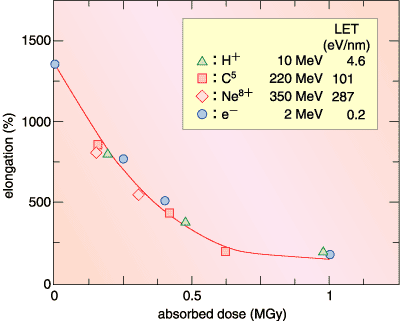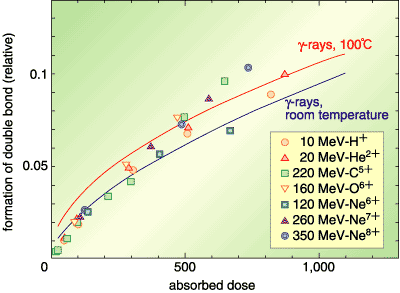Energy transfer occurs along the path of radiation traversing matter. The density of the transferred energy is mainly determined by the charge and velocity of the traversing energetic particles. In the case of X- or gamma-rays the relevant particles are assumed to be electrons. Changes of mechanical properties or chemical yields in irradiated materials, which are generally studied based on the absorbed energy in units of Gy (= J/kg), are discussed in terms of Linear Energy Transfer (LET = Energy transferred while the particle travels a unit distance in matter) to clarify effects caused by different types of radiation. In particular, it is important to know the LET effects of materials to be used in space technology in order to examine their durability when exposed to different types of radiation.
Polymer films of 100 mm x 100 mm with 100 mm thickness were irradiated uniformly with various different forms of radiation, (gamma-rays and various ion beams) and then submitted to measurements of their mechanical properties (Fig. 5-3). We also studied chemical changes in the polymer by examining the formation of double bonds as a result of hydrogen molecule emission, and the formation of new chemical bonds resulting from cross-linking between polymers (Fig. 5-4). In our experiment, no LET dependence was observed, the change in mechanical properties as well as the yield of formation of new bonds depended only on the absorbed dose. These results show that the same local density of energy is deposited along the path of any single ion, even if the ion has a different LET as in the case of gamma-rays. |

